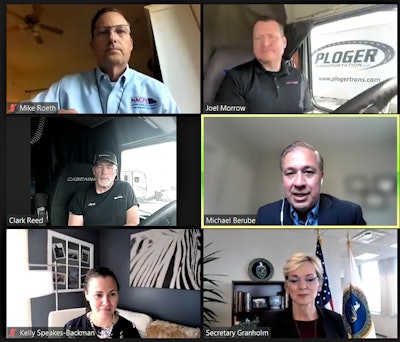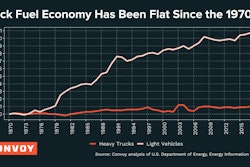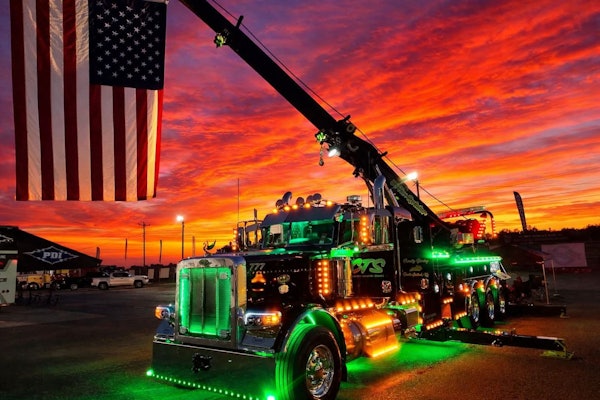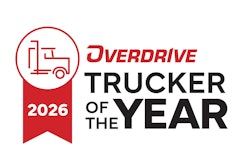 Past SuperTruck concepts from Volvo, Navistar and Freightliner involved diesel powertrains, principally. The third funding opportunity from the DOE for the SuperTruck program prioritizes battery-electric, hydrogen and hydrogen fuel-cell power plants across truck size spectrums.
Past SuperTruck concepts from Volvo, Navistar and Freightliner involved diesel powertrains, principally. The third funding opportunity from the DOE for the SuperTruck program prioritizes battery-electric, hydrogen and hydrogen fuel-cell power plants across truck size spectrums.
One of two experienced operators serving on a distinguished panel today summed up many owner-operators' thoughts about major technology advances after U.S. Department of Energy Secretary Jennifer Granholm announced a third round of Super Truck funding.
Joel Morrow, driver and specifications manager with small-mid-size fleet Ploger Transportation, stressed the importance of ensuring that the latest "technologies are ready for the real world."
Joining Morrow and Granholm on the panel were Clark Reed, driver with Nussbaum Transportation; two other federal officials; and North American Council for Freight Efficiency Executive Director MIke Roeth.
Most of the discussion centered on the push toward revolutionizing heavy-truck powertrains toward "net zero" carbon emissions. Granholm first announced that DOE is prepared to put millions of dollars toward a third SuperTruck design-build intiative involving battery-electric-, hydrogen- and hydrogen fuel-cell-powered trucks of all sizes. Morrow followed with a word of encouragement by way of the cautionary tale of the consequences that can result from the one-two punch of aggressive equipment mandates and less-than-adequate validation of them.

Owner-operators and small fleets are in a high-risk, high-reward business, he said. They're looking for every efficiency advantage they can get.
If high-reward technologies can be field-proven in programs such as SuperTruck, and further underscored by separated initiatives like NACFE's "Run on Less" initiative, he emphasized their importance for users, including small fleets and owner-operators, and for the nation's "environmental goals, but validating that technologies are ready for the real world" might be even more important for ensuring desired results.
That wasn't the case in the move toward diesel particulate filters with the 2007 spec and further aftertreatment in 2010, Morrow contended. "We didn’t have that validation as much as we needed, and a lot of small fleets and owner-operators took it on the chin in the field."
[Related: Don't let push toward electric powertrains turn into a 'green monopoly']
 Joel Morrow (top right) with fellow speakers on the April 15 DOE panel (proceeding clockwise): Michael Berube, acting deputy assistant secretary of transportation; DOE Secretary Jennifer Granholm; Acting Assistant Secretary of Energy Efficiency and Renewable Energy Kelly Speakes-Backman; Nussbaum Transportation's Clark Reed, from the road in Iowa; and NACFE Executive Director Mike Roeth.
Joel Morrow (top right) with fellow speakers on the April 15 DOE panel (proceeding clockwise): Michael Berube, acting deputy assistant secretary of transportation; DOE Secretary Jennifer Granholm; Acting Assistant Secretary of Energy Efficiency and Renewable Energy Kelly Speakes-Backman; Nussbaum Transportation's Clark Reed, from the road in Iowa; and NACFE Executive Director Mike Roeth.
There's little to suggest the dynamic has changed. The crash in the availability of gliders outfitted with reman pre-emissions engines could well even have compounded problems by sending more businesses back into the broader used market. That's now replete with 2007 and later engines, where buyers inherit existing emissions issues and deficiencies due to prior owners' driving habits, preventive maintenance, and so much more.
Overdrive Extra contributor Gary Buchs wrote about ways to budget for emissions maintenance if you're one of those used-truck buyers at this link. He attempts to get a handle on the unexpected nature of much of the repair/maintenance owners are experiencing with these systems. Todd Amen of financial services provider ATBS also had a lot to say about maintenance-related savings in last week's edition of the Overdrive Radio podcast.
As my colleague Lucas Deal of Trucks, Parts, Service put it back in 2015, commenting on Overdrive's survey, for used-truck buyers "engine rebuilds were the second most common service issue [behind emissions], but in purchasing such older equipment, I think it’s safe to assume [engine rebuilds] were expenses that could have been predicted during the purchasing decision."
[Related: The cost of emissions system maintenance]
Back then, he wondered whether "the case is the same for the 2007 to present buyers? Did they know how much emission systems, and the corresponding maintenance, could cost?"
As systems improve, and as owners gain ever more experience with these systems, increasingly the answer to that question is yes as much as no. Given the number of new companies getting into the trucking game today with carrier authority, though, the no group might well be the majority.
SuperTruck's first iteration started out more than a decade ago. The first NACFE-led Run on Less campaign, unaffiliated, further validated some of the technologies developed as a result of that but didn't take place for another seven years, following Super Truck 2. With this DOE announcement of further funding available, Run on Less Electric too has already been announced as a validator of some of the electric-vehicle concepts being tested in real-world operations today. With both programs proceeding apace, perhaps we can hope for an altogether better situation on the other side of what NACFE's Roeth has called the "Messy Middle" in any transition between generations of technology.
"Funding things [like these programs] to make that middle a little less messy is key" to success, said Nussbaum hauler Reed.
Morrow added that small companies "remain competitive through efficiency." While it's great that funding can help to bring these "high-risk, high-reward technologies into the marketplace, now we’re validating them, too – this is a super-important program I hope would get a lot of support, especially from that blue-collar grassroots group that makes up a majority of the trucking industry."
Access the archived stream of the April 15 DOE session via this link.









